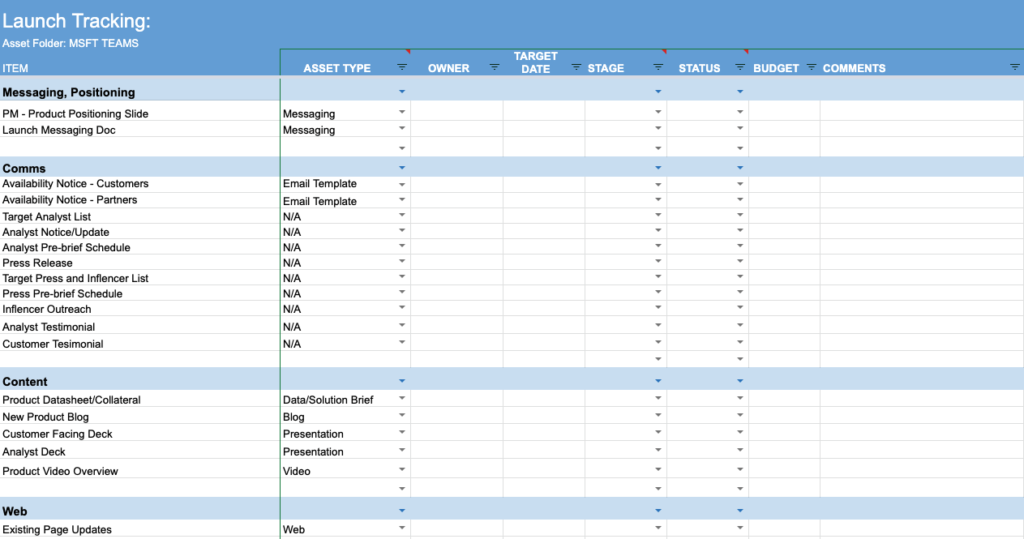Launching a new product can be a complex and risky process, and unfortunately, many new product introductions fail to meet objectives. In fact, according to Accenture, as much as 75% of new product launches fail to meet expectations.

In this blog post, I will explore the Top reasons why new product introductions often fail and what companies can do to avoid these common pitfalls.
1. Lack of Internal Alignment
According to a survey by McKinsey, the primary reason for new product launch failure is a lack of internal alignment. When launching a new product, it is essential to ensure that all stakeholders within the organization are aligned and working towards the same objectives. This includes cross-functional collaboration between marketing, sales, product development, and customer success teams. Organizations that have a formal product launch process are more likely to achieve their launch objectives, according to a study by Deloitte.
2. Failure to Understand Customer Needs
Understanding customer needs is critical to launching a successful new product. A survey by Forrester found that 59% of buyers prefer to do their own research online instead of speaking with a sales representative. Therefore, companies must involve customers in the product development process to ensure that the new product meets their needs. The Product Development and Management Association found that companies that involve customers in the product development process have a success rate of 58%, compared to 32% for companies that do not involve customers.
3. Clearly Set Product Expectations for Internal and External Audiences
Product readiness involves ensuring that the new product is ready for launch and meets the needs of the target market. If the product is not fully developed or tested, it may lead to customer dissatisfaction or negative reviews, ultimately impacting the success of the new product. Few products are truly complete at launch time with Todays iterative approach to product development. As a result, it’s important to be communicate what the product can fulfill for customers, but more importantly what it cannot to internal stakeholders who can work with partner or internal groups to fill tactical gaps in delivery, for example, or provide insight to customers into future roadmap items that will allow them to plan their own roadmaps and set expectations with their in-house customers.
4. Poor Customer Engagement
Poor customer engagement can lead to new product launch failure, even if a company understands customer needs. According to Gartner, 75% of B2B buyers expect personalized interactions throughout their customer journey, and a survey by HubSpot found that 61% of consumers expect companies to provide personalized experiences. Companies should have a formal customer engagement program in place to ensure good customer engagement. The Corporate Executive Board found that companies with a formal customer engagement program achieved a 15% increase in customer retention.
5. Regional Readiness
Global companies must ensure they have a plan that encompasses a global rollout. This is especially important for SaaS companies where a product may be rolled out in one region before being available in another. Companies must consider regional readiness, including channel readiness, which needs to be factored in, especially if the offering requires customization by solution VARs, or partners provide support for the product on a regional basis.
6. Lack of Involvement or Engagement from Organizational Functions
Lack of involvement or engagement from each of the organizational functions responsible for the customer experience and engagement can lead to new product launch failure. Companies need to ensure sales readiness, product readiness, and customer success and support team training and readiness, which is essential. Also, customer communications coordination from every touchpoint, including existing customers through support and sales channels, as well as coordinated outreach to net new customers through advertising, social media, email outreach, webinars, and other channels, can ensure that they have visibility and understanding of the newly launched offering.
7. Channel Communications and Readiness
Finally, channel readiness must be factored in, especially if the offering requires customization by solution vars or partners providing support for the product on a regional basis. Ensuring that partners are ready and equipped to support the new product can help to increase sales and customer satisfaction. The channel in most organizations and partners in general are often an afterthought. Surprised partners are generally unhappy partners, especially when it may have an impact to opportunities in-flight.
Launching a new product is a challenging and risky process, but with the right approach, companies can increase their chances of success. By focusing on internal alignment, understanding customer needs, good customer engagement, regional readiness, and involving all organizational functions responsible for the customer experience and engagement, companies can overcome the most common reasons why new product introductions fail to meet objectives.

Organizations need to develop or adopt a new product introduction and plan that is tailored to their specific organization, and socialized with each functional stakeholder. Consider adopting a RACI model – Responsible, Accountable, Consulted, Informed combined with clear process ownership, can help ensure better success and outcomes.